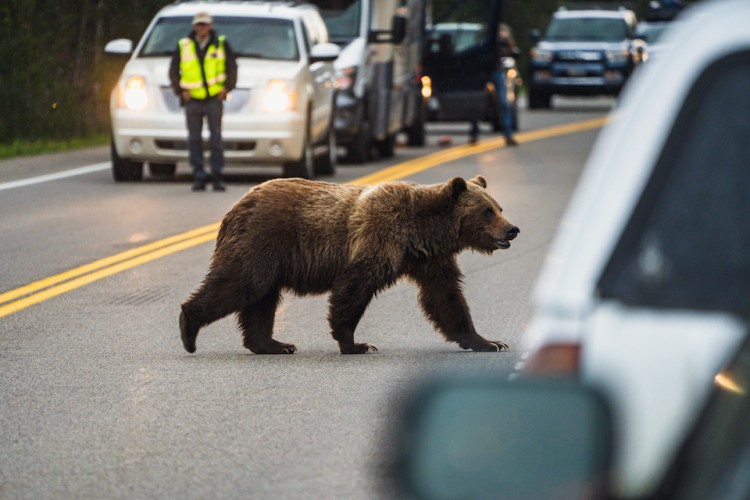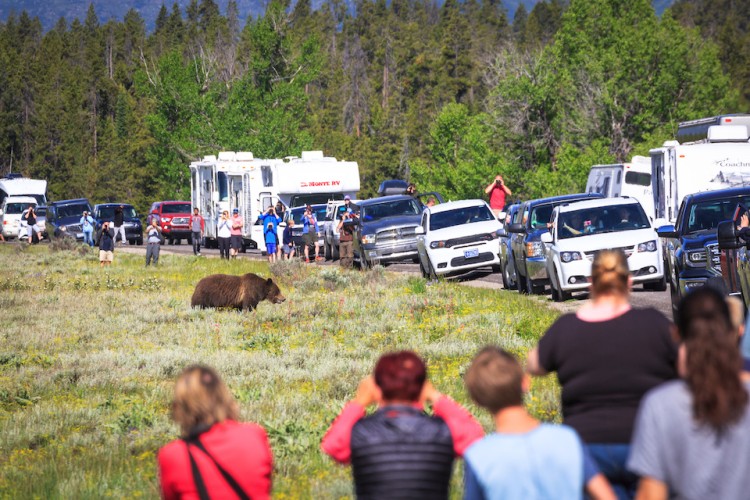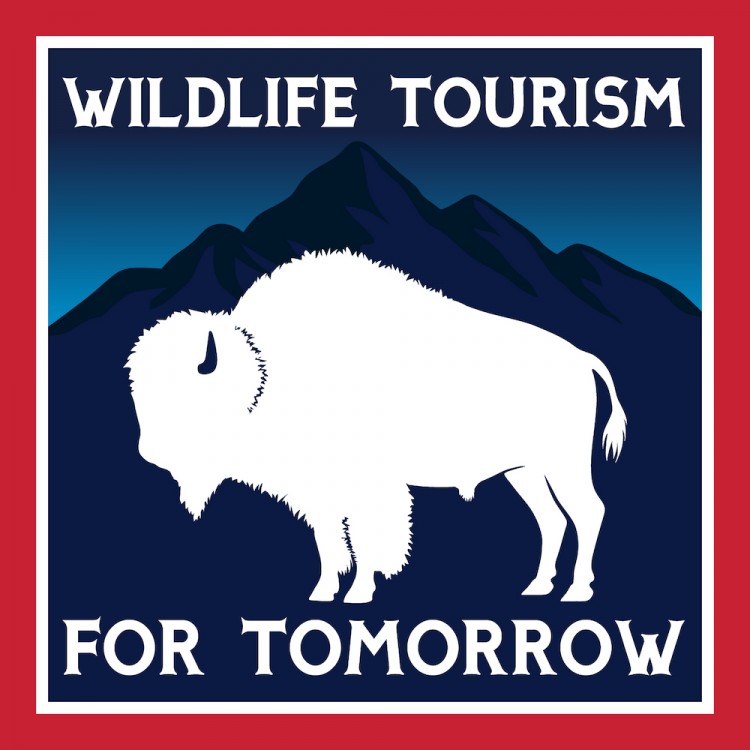Wildlife watching has been getting a free ride


A grizzly bear crosses a road in Grand Teton National Park while volunteers work to manage the crowds of onlookers. Photo by Kelsey Wellington.
There’s a new initiative in Wyoming that’s changing the face of wildlife conservation funding, and it’s already seen huge success in its first year.
It’s based on the state’s startling mountains, rivers filled with fish and forests where bears and wolves roam — everything that makes Wyoming unrivaled.
Managing the state’s wildlife is the Wyoming Game and Fish Department, which is funded at some 85 percent by hunters and anglers. This happens largely through the sale of hunting and fishing licenses, as well as taxes on sporting goods related to these activities through the Pittman-Robertson and Dingell-Johnson Acts.
But as we all know, hunters and anglers aren’t the only people fascinated by wildlife. The number one reason people travel to Wyoming is to view wild animals, and wildlife watching alone accounts for almost half a billion dollars in state revenue. It also employs over 10,000 people.
Yet the tourism industry, which I’m part of as a wildlife guide, contributes very little when it comes to funding wildlife conservation.

A grizzly bear jam in Grand Teton National Park. Photo by Josh Metten.
Taylor Phillips, owner of EcoTour Adventures, a wildlife tour company based in Jackson, Wyoming, felt this gap was unfair and wanted to do something about it. Since founding his business in 2008, Phillips donated over $115,000 to nonprofits that work to conserve the Greater Yellowstone Ecosystem.
Phillips says he expected other wildlife tourism businesses to catch on, but very few did. Wanting to change the narrative, Phillips partnered with Chris McBarnes, president of The WYldlife Fund, a partner foundation to the state game and fish department that helps fund wildlife projects across Wyoming. Together, the two men created Wildlife Tourism for Tomorrow, a nonprofit that funds conservation by targeting businesses and people that depend on wildlife to make their living. These are the companies that run wildlife tours, and the hotels, restaurants and shops that cater to wildlife watchers.
By tapping into this tourism constituency, the new group “has enormous potential to change the face of funding wildlife conservation in Wyoming,” says Phillips. Diane Shober, executive director of the Wyoming Office of Tourism, agrees, calling Wildlife Tourism for Tomorrow “a crucial initiative” for wildlife conservation, especially as hunting revenues decline.
Donations are collected from both individuals and businesses through Wildlife Tourism’s website, and donors have the option to select the conservation projects their money helps.
One project currently in need of funding is the restoration of sagebrush habitat in Grand Teton National Park. In the early 1900s, several thousand acres of land in the park were cultivated for hay production, which fragmented the land for wildlife. Since 2009, the park has been working to restore 4,500 acres of converted hay fields to their natural sagebrush conditions, a multiyear project with an annual budget of over $400,000. Funding through Wildlife Tourism for Tomorrow donations is helping to keep the project going.

The nonprofit also uses the money it raises to build wildlife crossings to minimize vehicle collisions, and also to install wildlife-friendly fencing at migration corridors. Other contributions go toward restoring wetlands and radio-collaring elk for scientific study.
Usually, the projects that help wildlife are designed by organizations such as Trout Unlimited, the U.S. Forest Service and the Rocky Mountain Elk Foundation. Project developers then partner with other interested groups to seek funding through the state’s underfunded Fish and Game Department. Wildlife Tourism for Tomorrow steps in to help fill the gaps in funding.
Since October of 2021, Wildlife Tourism for Tomorrow has raised over $200,000 for Wyoming’s wildlife from over 70 businesses and dozens of individuals, and has given $84,900 in gifts for wildlife conservation projects. Trout Unlimited received a gift of $20,000 in 2020 for a project to keep spawning cutthroat trout from getting trapped in an irrigation system.
Trout Unlimited’s Leslie Steen appreciated the help: “I’ve seen wildlife tour trips in the area and it is really neat to think that those same businesses are now giving back to native fish.”
Wildlife Tourism for Tomorrow has grown quickly in its first year, and support from Wyoming Gov. Mark Gordon has given it more visibility. Meanwhile, Phillips has spent a lot of time spreading the word that people who love wildlife need to step up. For too long, hunters and anglers have been doing the hefty lifting.
Hey, other Western states, maybe it’s time to get on board.
Kelsey Wellington is a guide for Jackson Hole EcoTours and a writer for Writers on the Range, an independent nonprofit dedicated to spurring conversation about the West













